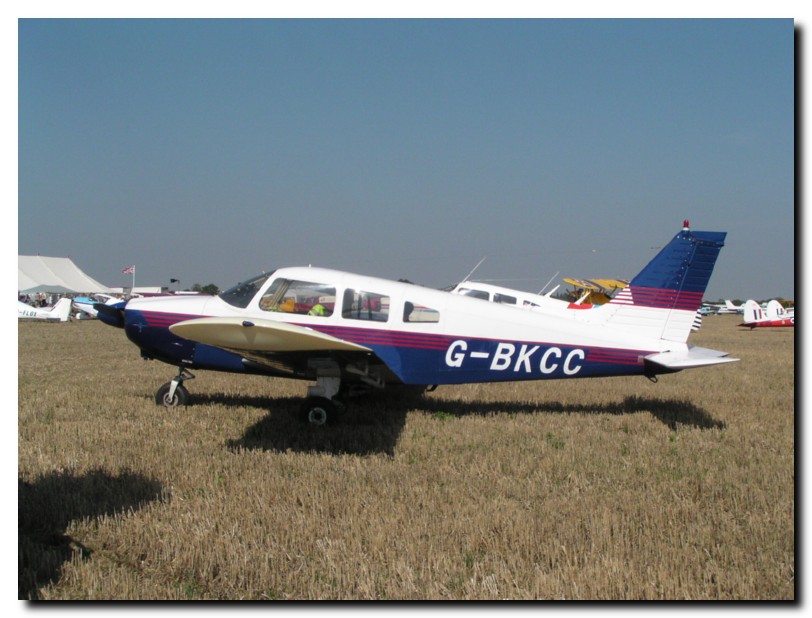 |
| The Welsh Hills near Abergavenny on a recent local flight |
Aircraft accidents and emergencies have been at the forefront of public attention recently, with the uncontained failure of a Rolls-Royce Trent 900 on a Qantas A380 last week. The nature of the failure was pretty severe, and it looks like a turbine-disk got away, but the hysterical ramblings of the mainstream media really irritate me. The way the TV News whittled on you'd have thought that the flight had been lost with all on board, but due to the training of the crew there was no disaster - I suspect they could teach the BBC a few things in terms of professionalism. Qantas had a similar uncontrolled failure of an RB211 on a 747 less than two months previously, with a similar number on board, which didn't even make the news, probably because the aircraft wasn't largely of British origin. Trying to rubbish indigenous engineering achievements is, sadly, a favourite past-time of the British media, and the wonder of seeing an 800ton behemoth lumber into the sky apparently pales in comparison to the 'shock' that the public assumption that all modern machines will be 100% reliable has turned out to be unrealistic.
 |
| 7000ft in a Cherokee. It's always sunny up here. Cold, too! |
Anyway, rant over, and back to my own flying. Charlie-Charlie had a couple of weeks of down time to sort out the alternator issues, which haven't resurfaced, but out of caution (and a bit of a lack of confidence, I'll admit), I decided to replace the trip I had planned to Duxford with my Dad with a short local. This was was to be my first completely solo flight in CC, with no passengers at all, so I took the opportunity to do some general handling and some manoeuvres which inexperienced passengers normally find a little too vigorous and uncomfortable (including a practice forced landing after watching the video above). The weather was a bit overcast, but I found a gap in the clouds and took the opportunity to climb up to about 7000ft. The view over the top of the overcast was wonderful, and I was probably the only person in Gloucestershire to see the sun shine that day. I've got to get an instrument qualification at some point so that I can do this any time I like!
The next trip was to take my friend Dixie up for a blat around. The initial suggestion was to fly around the local patch, then return to Gloucester, but after my solo local flight, I was keen to go somewhere for a coffee. Dixie hadn't flown in a light aircraft before so there was a possibility of air-sickness, so we settled on Shobdon, near Hereford as a destination, mainly because it's close by, but also because I hadn't been there before (odd, considering it's probably the closest airfield to base!).
Flight planning consisted of checking the NOTAMS and weather, and calling up the destination to inform them that we would be coming, but not actually planning a route, since Shobdon isn't far outside the area that I use for general handling exercises, so I know the way by heart. We didn't need fuel, and the weather was fine, so departure was quick and easy. We ended up flying via Kidderminster, and West-Midland Safari Park, so we got to see some animals as well.
My landing at Shobdon, filmed by a helpful passenger!
There were some radio issues at Shobdon. The airfield radio was very quiet, which added a little bit of stress turning the volume controls up and down depending on who was talking, but other than that it was a straightforward join and landing, followed by a great coffee and bacon sandwich, helpfully paid for by my willing passenger! Our visit was cut a little short by incoming showers, and the trip back to Gloucester was a bit grey and murky, but very definitely still VMC.
 |
| A hangar buddy of CC. $500,000 worth when it was new! |
On return to Gloucester we got the usual excellent service from ATC, and a very helpful direct join to slot in around Seneca's doing circuits and practise instrument approaches. Back on the ground, Dixie seemed most impressed with CC, but even more impressed with the Cirrus and Seneca which we share hangar space with. I always think it's strange that you drag other peoples aircraft around to get yours out, when the Cirrus costs more than twice as much as my house. It's like leaving a Ferrari 599 in a multi-storey car park with the handbrake off, so people can move it if it's in their way.
I love taking people flying: It's just so much better than being on the ground! When I was training I'd looked forward to taking all of my friends up, and generally anyone who I thought could persuade to come. In practice though, arranging a mutually convenient time, and getting that to coincide with aircraft availability and decent weather has proved very difficult, so I've only taken a few people. I'll be looking to address that over the next few months...

















